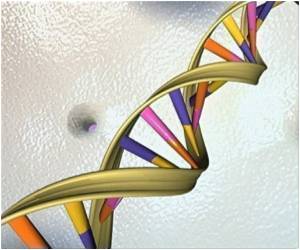Scientists have discovered genetic alterations that account for most cases of Kabuki syndrome by using a new, rapid and less expensive DNA sequencing strategy.

Kabuki syndrome, which has an estimated incidence of 1 in 32,000 births, was originally described by Japanese scientists in 1981. Patients with the disorder often have distinct facial features that resemble the make-up worn by actors of Kabuki, a Japanese theatrical form.
The work, published in today's advanced online edition of Nature Genetics, was carried out by scientists at the University of Washington in Seattle as part of a larger effort to use 'second generation' DNA sequencing technologies in new ways to identify genes for rare disorders. The project is funded by a $3.9 million American Recovery and Reinvestment Act grant from the National Human Genome Research Institute (NHGRI), part of the National Institutes of Health.
"It's clear from this work that new DNA sequencing technologies are powerful and effective tools that scientists can use to accelerate the discovery of genes involved in rare diseases, an effort that previously was slow and costly," said NHGRI Director Eric D. Green, M.D., Ph.D. "The potential to rapidly identify gene mutations causing more than 6,000 rare diseases is an important step forward for researchers who are trying to understand the biology of these conditions and thereby improve strategies to care for patients they affect."
The University of Washington researchers sequenced the exomes of 10 unrelated individuals with Kabuki syndrome. Beginning with the premise that Kabuki syndrome is caused by alterations in just a single gene, the researchers compared the exomes of the 10 patients to the human genome sequence to look for differences shared by the affected individuals. Initially, the researchers identified none.
The researchers then tested the hypothesis that Kabuki syndrome is more genetically heterogeneous than originally assumed, and that multiple genes could potentially cause the disorder. Looking for novel variants in genes that were shared among subsets of the 10 patients' exomes, they found novel, matching variants that were shared in three genes in nine of the patient's exomes, shared in six genes in at least eight exomes, and shared in 16 genes among seven exomes.
Advertisement
The researchers found novel variants which lead to a loss of function in the MLL2 gene in the four highest ranked cases, and in three of the remaining six cases. The variants were nonsense and frameshift mutations. The nonsense mutation substituted a single nucleotide (a molecule that links to form DNA) in the gene code, while the frameshift mutation resulted in a four nucleotide deletion in the gene.
Advertisement
Once the researchers suspected the MLL2 gene, follow-up sequencing using the traditional and highly accurate Sanger DNA sequencing method, more capable of reliably detecting frameshifts, was used to identify additional MLL2 loss-of-function gene variants, which lead to a loss of function in two of the three remaining cases. Ultimately, the researchers were able to discover MLL2 mutations in nine of the 10 patients' exomes.
The findings were then validated using Sanger sequencing in 43 additional Kabuki syndrome cases. Novel MLL2 variants were found in 26 of the 43 cases. In the end, a total of 33 distinct MLL2 mutations were found in 35 of 53, or 66 percent, of patients with Kabuki syndrome. The researchers also discovered that in each of the 12 cases for which DNA from both parents was available, the MLL2 variants reflected new mutations within the affected individual's genome and were not present in either parent's genomes.
"Our findings strongly suggest that alterations in the MLL2 gene are a major cause of Kabuki syndrome," said co-senior author Jay Shendure, M.D., Ph.D., assistant professor of genome sciences at the University of Washington School of Medicine.
"It is clear that there may be additional genes in which variants cause Kabuki syndrome, as approximately one-third of cases did not have MLL2 mutations," said co-senior author Michael Bamshad, M.D., professor of pediatrics at the University of Washington School of Medicine. "To find these, it will be important to sequence the exomes of additional, well-characterized cases of Kabuki syndrome in which we do not find we don't see MLL2 mutations."
Source-Eurekalert









